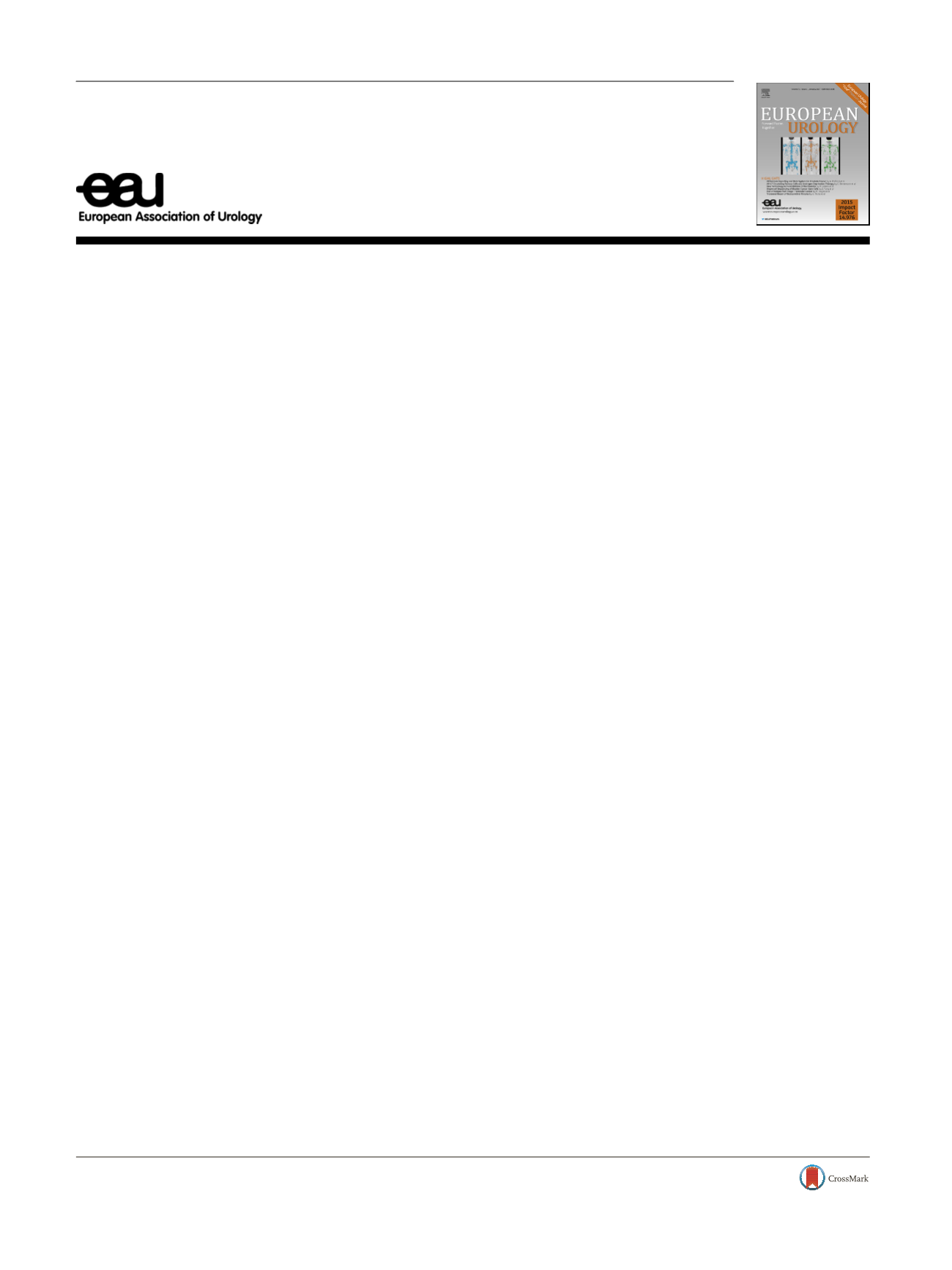

Platinum Priority – Editorial
Referring to the article published on pp. 869–885 of this issue
Quality of Life Outcomes Following Treatment for Localized
Prostate Cancer: What’s New and What’s Not
David F. Penson
a , b , *a
Department of Urologic Surgery, Vanderbilt University, Nashville, TN, USA;
b
VA Tennessee Valley Geriatric Research, Education, and Clinical Center,
Nashville, TN, USA
In this issue of
European Urology
,
[2_TD$DIFF]
Lardas and colleagues
[1]present results of a systematic review of the literature on
quality of life (QOL) outcomes following treatment for
localized prostate cancer. The findings should surprise no
one. Surgery is associated with greater sexual and urinary
dysfunction when compared to active surveillance (AS) or
external-beam radiotherapy (EBRT). Conversely, EBRT is
associated with greater bowel dysfunction when compared
to surgery or AS. Finally, and perhaps most importantly, AS
had the least negative impact on QOL outcomes of all the
therapeutic options. Importantly, while there were subtle
minor differences between studies included in the review
that were probably related to sample size and/or study
design issues, the general findings were relatively consis-
tent across all 18 studies included in the analysis. Simply
put, surgery and radiation each negatively affect QOL, albeit
differently, and patients who can be safely managed with AS
should be strongly encouraged to choose this therapeutic
strategy. While these key messages are not surprising and
are generally well known, the review also raises several
other new points that should be considered.
First, despite numerous purported technical advances in
surgical and radiation techniques over the past 25 yr, the
findings of the various studies remain remarkably consis-
tent over time. For example, QOL findings following surgery
noted in the PCOS study
[2], which accrued patients in
1994–1995, are strikingly similar to those from the CEASAR
study
[3], which has a very similar study design but enrolled
patients during 2011–2012. These studies, and others
[1],
demonstrate that overall estimates of post-surgical erectile
dysfunction and urinary incontinence have remained
basically unchanged despite a better understanding of
surgical anatomy and technique and the introduction and
rapid updating of robotic technology. Unfortunately, it is
difficult to draw definitive conclusions from the systematic
review regarding temporal improvements in EBRT because
of the authors’ decision to categorize isolated EBRT,
brachytherapy with EBRT boost, and EBRT in combination
with androgen deprivation into a single heterogeneous
‘‘EBRT’’ group. Acknowledging this, the study notes that
modern ‘‘EBRT’’ appears to be associated with less bowel
dysfunction, probably because of advances in radiation
techniques. This improvement in bowel dysfunction,
however, is incremental at best and does not really
represent a major therapeutic breakthrough. To this end,
we must accept that we have probably reached the limit of
our ability to improve outcomes via technical changes in
surgical or radiation methods. Short of a paradigm-
changing new approach to treatment, the results presented
here are probably the best we can expect.
The systematic review raises a second relatively new and
important point. The QOL outcomes noted in the 18 studies
included tend to be considerably worse than those noted in
prior reports from single-center, high-volume academic
medical centers. Many of the studies in the current report
are multicenter in design or are population-based, making
them more representative of the general population. For
example, for patients undergoing surgery in the ProtecT
trial the impotence rate (defined as erections insufficient for
intercourse) was 81% at 2 yr following randomization
[4] .Contrast this to the single-center study by Rodriguez
and colleagues
[5]with a potency rate of 89% (based on
E U R O P E A N U R O L O G Y 7 2 ( 2 0 1 7 ) 8 8 6 – 8 8 7available at
www.scienced irect.comjournal homepage:
www.europeanurology.comDOI of original article:
http://dx.doi.org/10.1016/j.eururo.2017.06.035.
* Department of Urologic Surgery, Vanderbilt University Medical Center, A-1302 Medical Center North, Nashville, TN 37232-2765, USA.
Tel. +1 615 3430234.
E-mail address:
david.penson@vanderbilt.edu.
http://dx.doi.org/10.1016/j.eururo.2017.07.0100302-2838/
#
2017 European Association of Urology. Published by Elsevier B.V. All rights reserved.
















